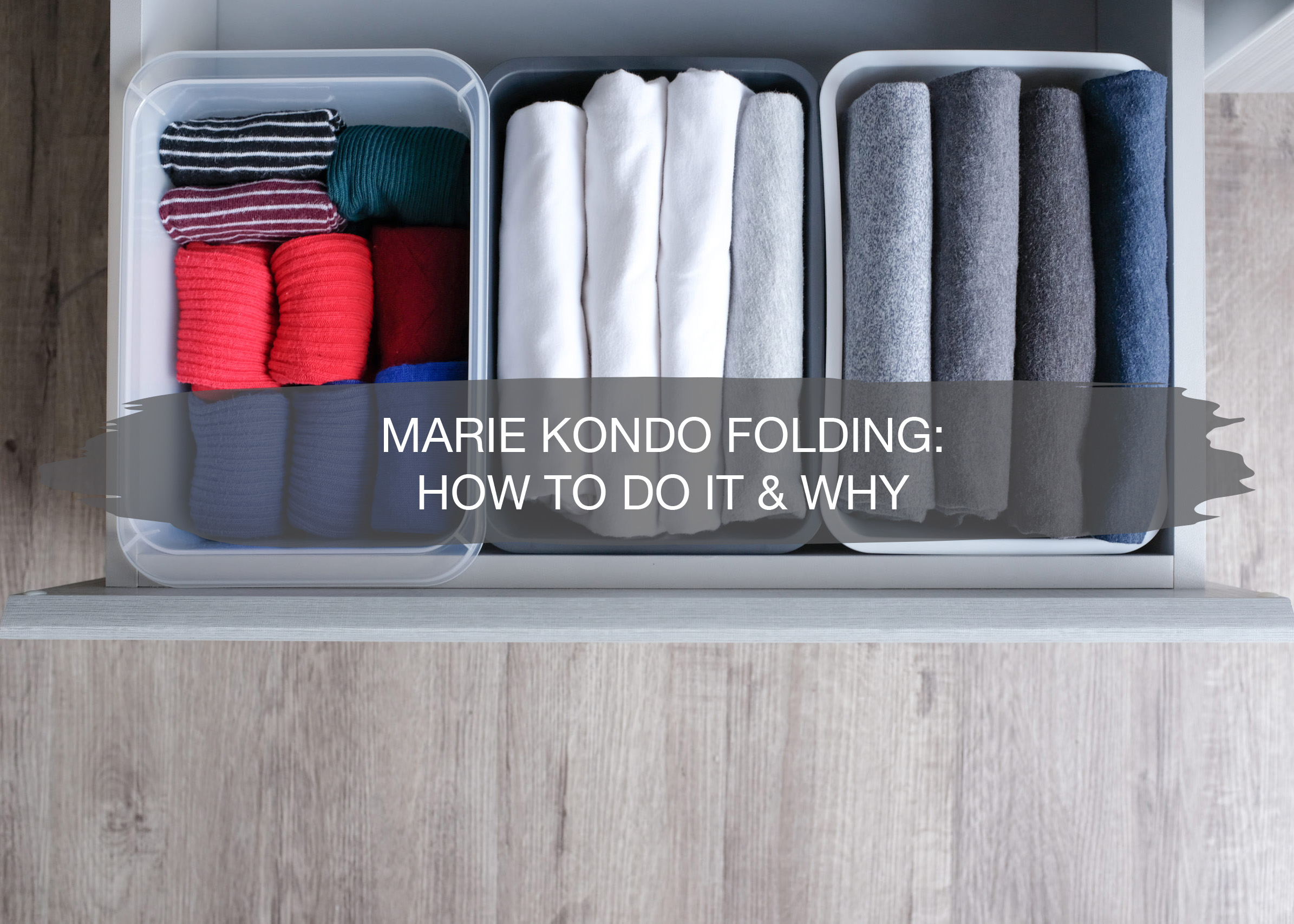
You might have heard some of the buzz going around. Everyone has been recently obsessed with learning how to fold and tidy up with the now-famous Marie Kondo.
Of course, everyone wants to tidy up and learn tricks to keep things more organized, but this girl has taken it all by storm!
She started becoming more popular and sharing some of the concepts that she had learned from her culture in her book, The Life-Changing Magic of Tidying Up: The Japanese Art of Decluttering and Organizing. And, in 2019, Netflix released one season of a show called Tidying Up with Marie Kondo. The show did well, and many people are now interested in knowing why you’d ever want to change the way you fold laundry.
Let’s look into what it’s all about!
What is the KonMari Method?
The Marie Kondo folding method isn’t as complex as you might think. Yes, it’s different than what you might be used to, but it’s easy to learn. This method of folding has been coined the “KonMari method.” The KonMari method isn’t just about folding either. It’s also about living a more minimalistic and straightforward lifestyle.
The first step in this process is acknowledging the things you have and understanding that you might not need all of them. This isn’t easy for everyone, but for others, it can be a huge help and newfound freedom.
The next step is committing to a more organized lifestyle. That comes through getting things that you don’t need or use and allowing that to change your life. The key to doing this well? It’s the KonMari checklist of belonging. Simply stated, the list consists of five categories.
- Clothing
- Books
- Papers
- Kimono (miscellaneous items)
- Sentimental
The last step before we get into the actual organizational pieces of the KonMari method is finding joy. Finding joy is one of the most fundamental elements of this approach. If an item doesn’t bring you joy, then do you need to have it? Do things around you adequately serve a purpose? These are the questions we need to be asking ourselves.
What is KonMari Folding?
After working through the items that you own, the next step is organizing. With clothing, it’s simple, and it’s all about functionality. It’s not that you can’t place the items neatly hung in a closet, but Marie would say that the clothes are much happier when neatly folded. This structure will help efficiently put your clothes away and make finding the perfect outfit much easier. Let’s be honest, who’s not looking for an easier way to pick out an outfit?
The main objective when it comes to folding anything within this method is organization and space-saving. Keep that in mind as we go through the different clothing items:
Socks – most people would just place their socks in a drawer randomly or fold socks up into a ball. But with the goal of organization, you’ll need to lay them flat on top of each other, fold the toe upwards, about an inch or two under the ankle, and then fold in half, and in half again so that it stands up. This helps them to be easily accessed in the drawer.
Underwear – Lay your underwear flat, pull the crotch to the waistband (lengthwise), fold the sides in so it creates a square, fold the crotch to the waistband once more so that it stands up. That’s a little extra effort than just throwing it all into a drawer, but how bad could it hurt to feel a bit more put together?
t-Shirts – Shirts can by far be one of the hardest items to keep track of. Sometimes you’ll even forget you have certain shirts that are buried down under the others. Well, not anymore! Lay your T-shirt down flat, fold the right side inward, fold the right sleeve back halfway, repeat with the left side, fold the neckline down towards the hemline with an inch of space between each, fold in half, then in half again so that it stands.
You might be noticing that everything stands when it is folded properly. Because each one is folded independently of the other, you’ll be able to easily reach what you need without everything falling down.
A key fundamental in the KonMari folding method is vertical folding. This involves storing your clothes “vertically” or so they stand upright. It’s kind of like a series of movies or books you store in a drawer with the spine facing upwards so you can see what it is. When applied to clothing, it makes it incredibly easy to store a large volume of clothing in one drawer, while being able to easily see and access each article.
Long Sleeves and Sweaters – Lay your sweater flat with the sleeves spread outwards, fold the right side inward with the sleeve spread out towards the left. Then, fold the sleeve towards the right and downward in the shape of a triangle, do the same on the left side, once you have a rectangle, start folding down from the top (kind of like a roll) until it stands.
Pants – place your jeans down flat with the buttons facing up, fold the left leg on top of the right, fold the crotch in, at the ankles, fold inward once, stopping at the crotch, fold inward from the bottom (in that same “rolling” motion) until it stands.
And that’s it! If you follow these practices, you’re sure to get organized quickly and neatly. If you need a more visual way to learn the folding patterns, you can find some pictures on Pinterest.
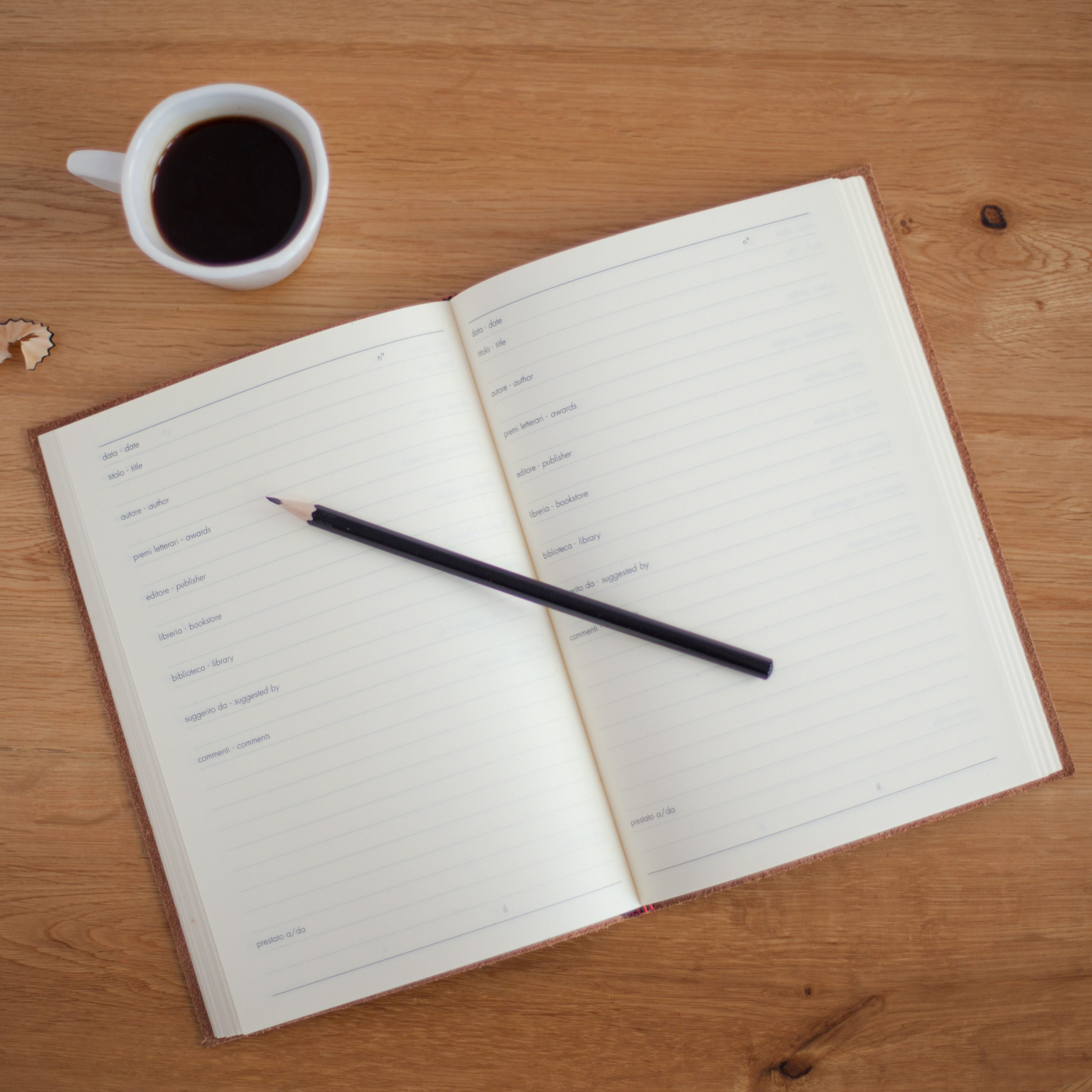
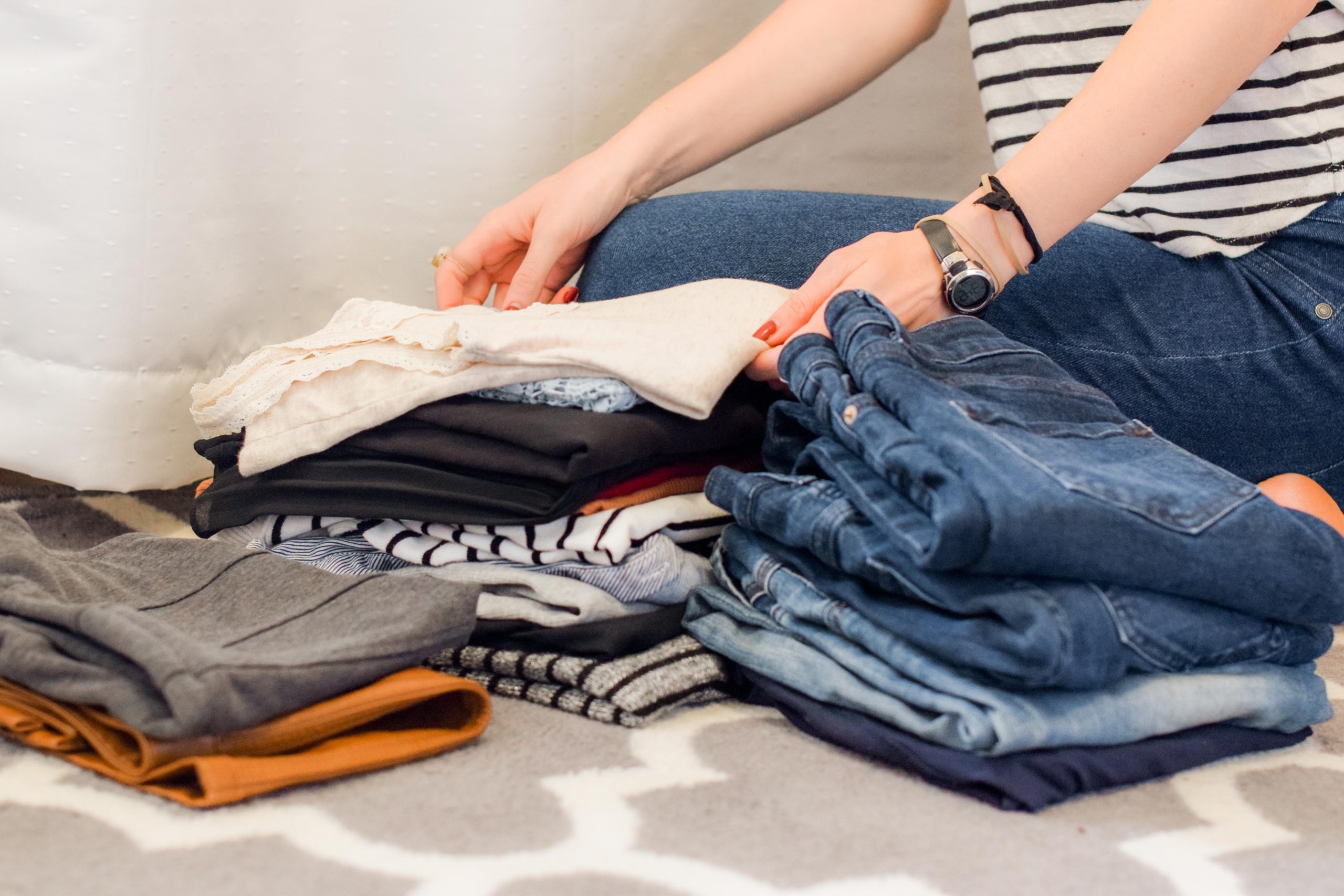

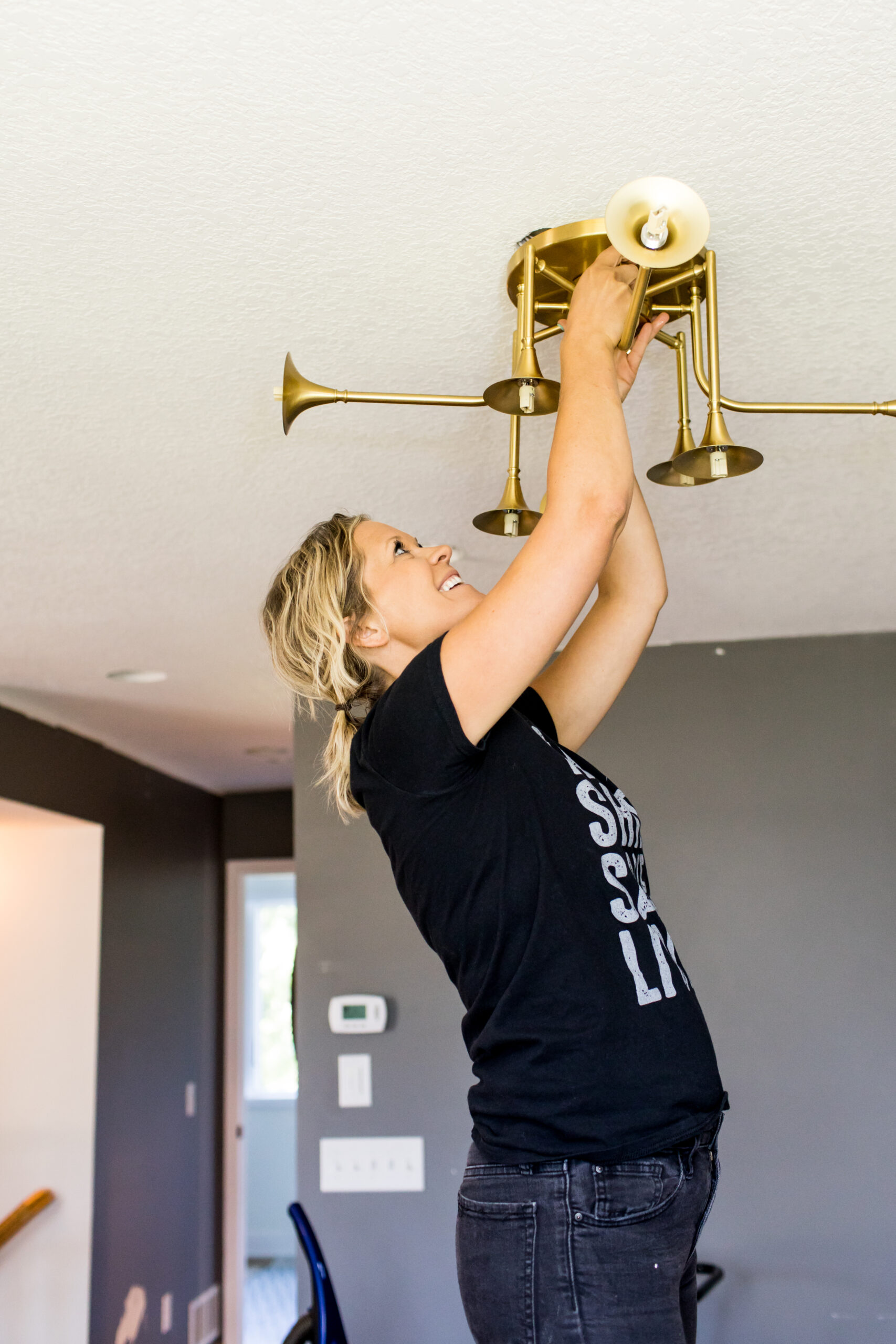
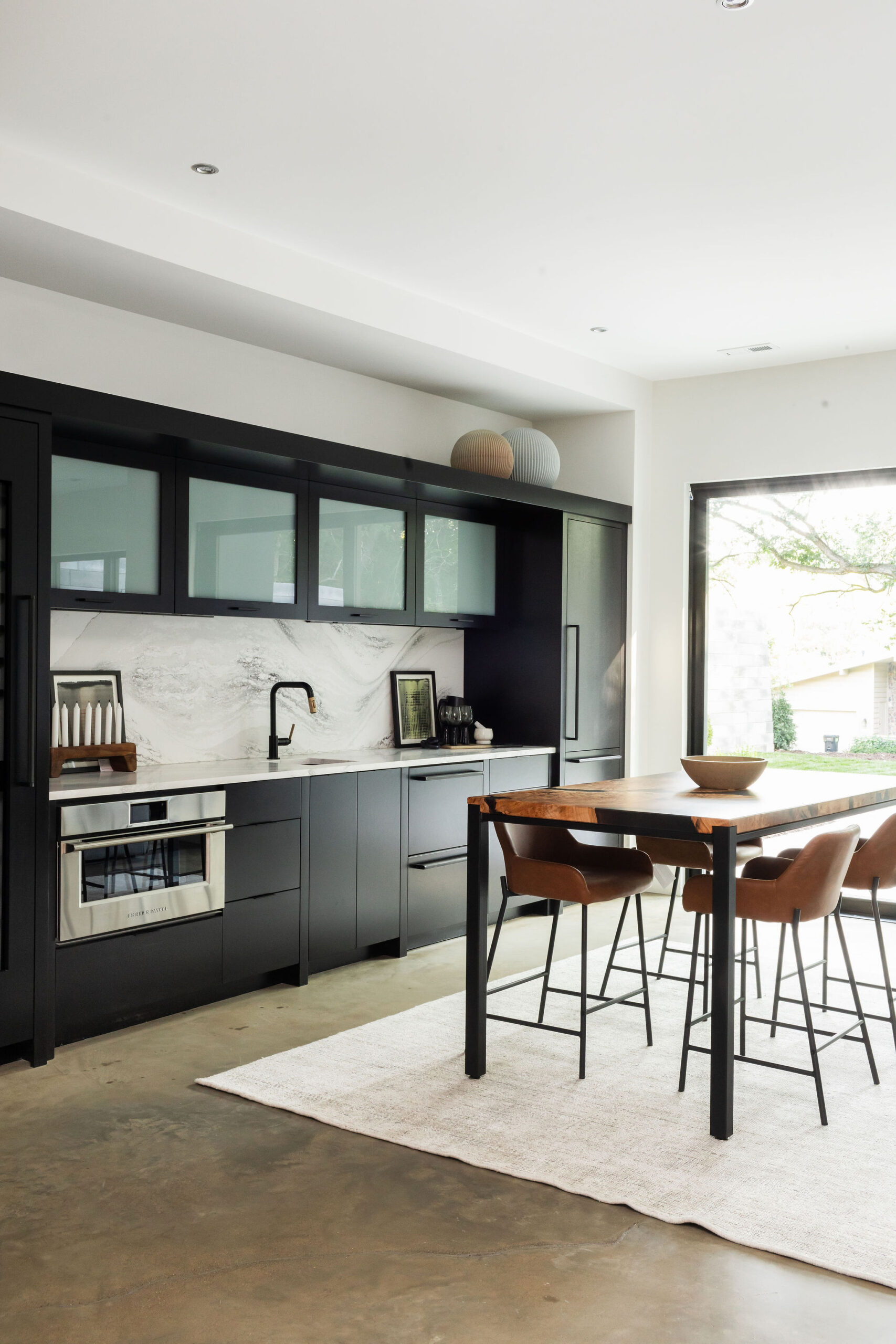


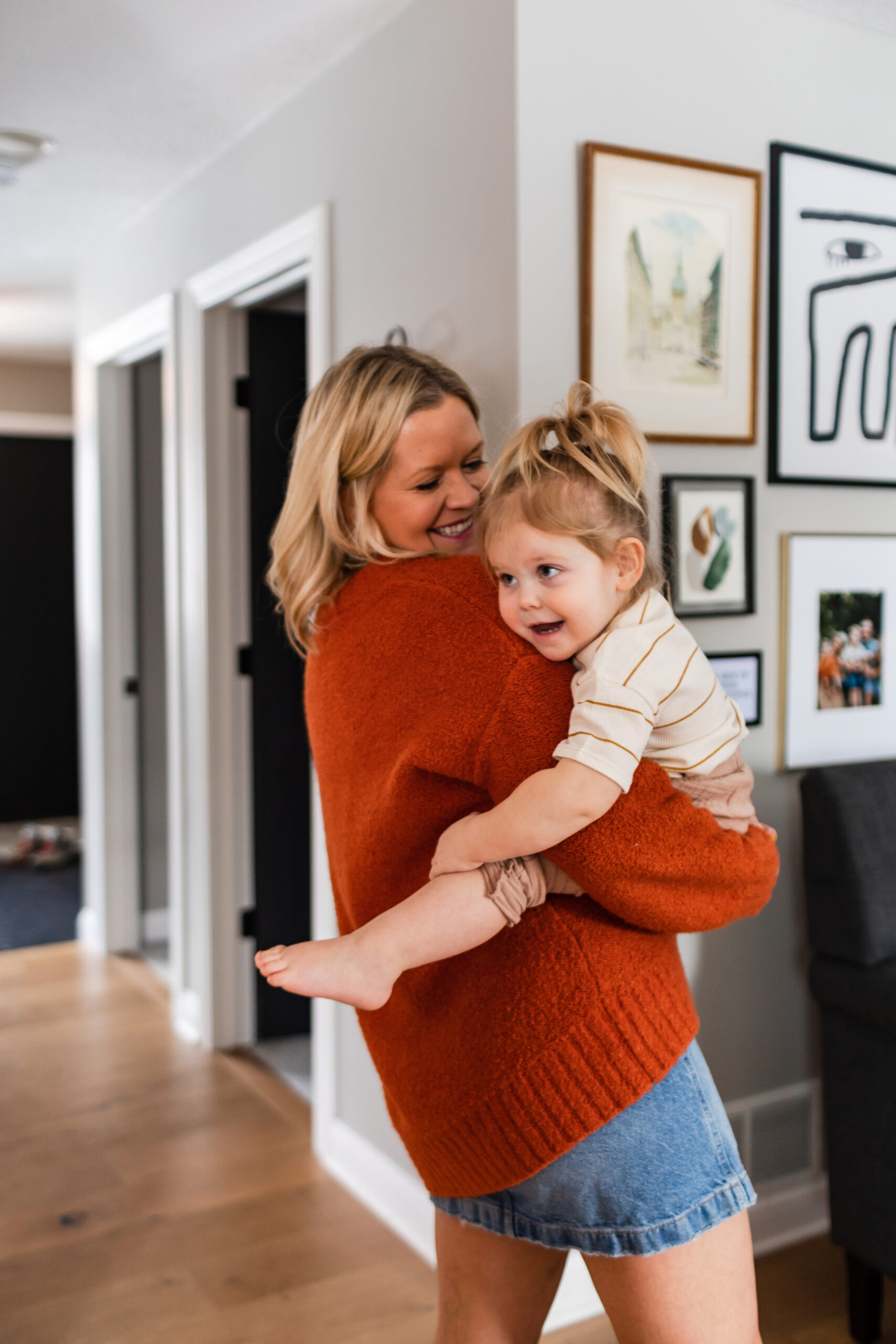
One thought on “Marie Kondo Folding: How To Do It & Why”
Comments are closed.